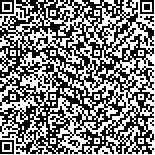| Quote
: |
吴圆圆,蔡萧君,李浩经,蔡英杰,李宇,王钦.柴胡加龙骨牡蛎汤对慢性应激抑郁大鼠炎症因子及单胺类神经递质受体表达的影响[J].湖南中医药大学学报英文版,2022,42(5):748-754.[Click to copy
] |
|
| |
|
|
| This paper
:Browser 2147times Download 639times |
| 柴胡加龙骨牡蛎汤对慢性应激抑郁大鼠炎症因子及单胺类神经递质受体表达的影响 |
| 吴圆圆,蔡萧君,李浩经,蔡英杰,李宇,王钦 |
| (黑龙江省中医药科学院, 黑龙江 哈尔滨 150001) |
| 摘要: |
| 目的 通过研究柴胡加龙骨牡蛎汤对血清炎症因子及海马区单胺类神经递质受体的影响,探讨其治疗抑郁的可能机制。方法 随机从40只大鼠中选取30只建立慢性应激抑郁大鼠模型,造模成功后随机分为模型组、中药组、西药组,每组10只,未进行造模的10只大鼠为空白组。空白组、模型组每天给予蒸馏水6.3 mL/kg,西药组每天给予盐酸氟西汀3.17 mg/kg,中药组每天予柴胡加龙骨牡蛎汤1.638 g/kg,每组均连续灌胃干预8周。干预前后,采用旷场试验观察大鼠活动总路程;采用悬尾实验观察大鼠挣扎静止时间;采用强迫游泳实验观察大鼠游泳不动时间。干预8周后,采用HE染色观察各组大鼠海马组织的病理形态学变化;采用ELISA法检测各组大鼠血清白细胞介素-1β(interleukin-1β, IL-1β)、白细胞介素-2(interleukin-2, IL-2)、白细胞介素-6(interleukin-6, IL-6)、白细胞介素-17(interleukin-17, IL-17)、白细胞介素-18(interleukin-18, IL-18)水平;采用免疫组织化学法观察各组大鼠海马组织中的5-羟色胺2A受体(serotonin 5-hydroxytryptamine 2A receptor, 5-HT2AR)、多巴胺受体D2(dopamine receptor D2, DARD2)表达水平;采用实时荧光PCR检测各组大鼠海马组织中的5-HT2AR、DARD2 mRNA相对表达量。结果 空白组海马区组织结构正常,神经细胞形态正常,排列整齐,细胞质饱满,细胞核清晰;模型组神经细胞数目相对减少,体积变小,细胞核出现皱缩;与模型组比较,柴胡龙骨牡蛎汤组和西药组大鼠神经细胞数目较多、体积较大、细胞核皱缩情况均有不同程度减轻,其中,中药组改善明显。与空白组比较,模型组活动总路程、悬尾挣扎时间均明显缩短(P<0.01),游泳不动时间明显延长(P<0.01),IL-1β、IL-6、IL-18含量明显升高(P<0.01),IL-2含量明显降低(P<0.01),5-HT2AR、DARD2蛋白及mRNA表达水平均明显降低(P<0.01)。与模型组比较,中、西药组活动总路程、悬尾挣扎时间均明显延长(P<0.01),游泳不动时间均明显缩短(P<0.01),IL-1β、IL-6、IL-18含量均明显降低(P<0.05,P<0.01),IL-2均明显升高(P<0.01),5-HT2AR、DARD2蛋白及mRNA表达均明显升高(P<0.05,P<0.01);与模型组比较,中药组IL-17含量明显降低(P<0.05)。中、西药组间活动总路程、游泳不动时间、悬尾挣扎时间比较,IL-1β、IL-2、IL-6、IL-17、IL-18含量比较,5-HT2AR、DARD2蛋白及mRNA表达水平比较,差异均无统计学意义(P>0.05)。干预后,中、西药组活动总路程、悬尾挣扎时间均明显长于干预前(P<0.01),游泳不动时间均明显短于干预前(P<0.01)。结论 柴胡加龙骨牡蛎汤可能通过调控炎症因子及单胺类神经递质功能治疗抑郁。 |
| 关键词: 抑郁证 柴胡加龙骨牡蛎汤 炎症因子 单胺类神经递质 郁证 |
| DOI:10.3969/j.issn.1674-070X.2022.05.010 |
| Received:November 15, 2021 |
| 基金项目:黑龙江省应用技术研究与开发计划项目(GA19C108)。 |
|
| Effect of Chaihu plus Longgu Muli Decoction on expression of inflammatory factors and monoamine neurotransmitter receptors in chronic stress-induced depression rats |
| WU Yuanyuan,CAI Xiaojun,LI Haojing,CAI Yingjie,LI Yu,WANG Qin |
| (Heilongjiang Academy of Traditional Chinese Medicine, Harbin, Heilongjiang 150001, China) |
| Abstract: |
| Objective To investigate the effect of Chaihu plus Longgu Muli Decoction on serum inflammatory factors and monoamine neurotransmitter receptors in hippocampus, and to explore the possible mechanism of its treatment for depression. Methods 30 rats were randomly selected from 40 rats to establish chronic stress-induced depression rat model. After successful modeling, they were divided into model group, Chinese medicine group and western medicine group, with 10 rats in each group. The 10 rats without modeling were blank group. Blank group and model group were given 6.3 mL/kg distilled water every day; western medicine group was given 3.17 mg/kg fluoxetine hydrochloride every day; Chinese medicine group was treated with 1.638 g/kg Chaihu plus Longgu Muli Decoction every day. Each group was treated by gavage for 8 weeks. Before and after the intervention, open field test was used to observe the total movement distance of rats; suspension tail test was used to observe the struggle and rest time of rats; the immobile swimming time of rats was observed by forced swimming experiment. Eight weeks after intervention, the histopathological changes of hippocampal tissues were observed by HE staining; serum levels of interleukin-1 (IL-1β), interleukin-2 (IL-2), interleukin-6 (IL-6), interleukin-17 (IL-17) and interleukin-18 (IL-18) were detected by ELISA. The expression levels of serotonin 5-hydroxytryptamine 2A receptor (5-HT2AR) and dopamine receptor D2 (DARD2) in hippocampus were observed by immunohistochemistry; real-time PCR was used to detect the relative expression levels of 5-HT2AR and DARD2 mRNA in hippocampal tissues of rats in each group. Results In the blank group, the tissue structure of hippocampus was normal, the morphology of nerve cells were normal and neatly arranged, and the cytoplasm was full and the nucleus was clear. In the model group, the number and volume of nerve cells decreased, and the nucleus was shrunken. Compared with model group, the number and size of nerve cells in Chinese medicine group and western medicine group were more and larger, and the nuclear shrinkage were reduced to varying degrees, among which the improvement was obvious in Chinese medicine group. Compared with the blank group, the total movement distance and the struggle time of tail suspension in the model group were significantly shortened (P<0.01), the immobile swimming time was significantly prolonged (P<0.01), the content levels of IL-1β, IL-6 and IL-18 were significantly increased (P<0.01), and the content of IL-2 was significantly decreased (P<0.01), the protein and mRNA expression levels of 5-HT2AR and DARD2 were significantly decreased (P<0.01). Compared with model group, the the total movement distance and the struggle time of tail suspension were significantly prolonged (P<0.01), and the immobile swimming time was significantly shortened (P<0.01), the content levels of IL-1β, IL-6 and IL-18 were significantly decreased (P<0.05, P<0.01), IL-2 was significantly increased (P<0.01), 5-HT2AR and DARD2 protein and mRNA expression were significantly increased (P<0.05, P<0.01) in the Chinese medicine group and western medicine group; compared with model group, IL-17 content in Chinese medicine group was significantly decreased (P<0.05). There were no significant differences in total movement distance, immobile swimming time, struggle time of tail suspension, IL-1β, IL-2, IL-6, IL-17, IL-18 content, 5-HT2AR, DARD2 protein and mRNA expression levels between Chinese medicine group and western medicine group (P>0.05). After intervention, the total movement distance, the struggle time of tail suspension were significantly longer than before intervention (P<0.01), and the immobile swimming time were significantly shorter than before intervention (P<0.01) in Chinese medicine group and western medicine group. Conclusion Chaihu plus Longgu Muli Decoction can treat depression by regulating the functions of inflammatory factors and monoamine neurotransmitters. |
| Key words: depression Chaihu plus Longgu Muli Decoction inflammatory factor monoamine neurotransmitter depression syndrome |
|

二维码(扫一下试试看!) |
|
|
|
|


